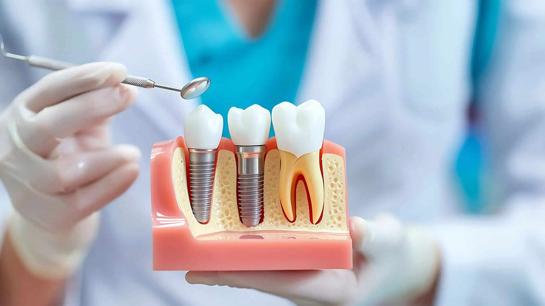Hair Transplant Abroad: The Real Story on FUT for Global Patients
Why People Quietly Google “Hair Transplant Abroad” After Every New Photo
Maybe it’s that moment in the mirror—temples creeping back—or a splashy vacation snapshot that leaves you thinking, “Did my hair used to look fuller?” Receding hairlines, thinning crowns, and patchy density rarely get top billing in conversation, but for men and women in their 30s, 40s, and well beyond, it’s a slow-burn worry. You scroll through forums, breath held, and again and again? Hair transplant abroad comes up—FUT, FUE, clinics promising restoration and confidence, often in places you’d never have considered for surgery.
But is hair transplant overseas really the smart, safe, and cost-friendly option it’s made out to be? Or does the whole process come with caveats and hidden hurdles? Let’s walk you through what genuinely matters—without hype, without overselling, and with all the messy, lived-in details real travelers bring home with them.
FUT: What It Is and Who It’s Still For—A No-Nonsense Breakdown
FUT stands for Follicular Unit Transplantation—sometimes called “strip surgery.” Surgeons take a thin strip of scalp (usually from the back of your head, where hair is thickest), carefully dissect out tiny follicle clusters under magnification, and then “plant” these groups into balding or thinning zones.
Yes, it does leave a fine, linear scar—often hidden by the remaining hair. But here’s the kicker: FUT is still the go-to option in many hair transplant abroad centers for people who want…
- Maximum grafts in one go (think: large area of transplant needed)
- Hair that’s been previously cut short at the back (making scars easier to hide)
- A potentially better yield and density in one session than some FUE cases can offer
Overseas clinics, especially in places like Turkey, Poland, Thailand, and Spain, continue to focus on FUT for good candidates—often at a fraction of the cost you’d pay at home.
Why Go for Hair Transplant Overseas—Beyond Just the Price Tag
Here’s what brings a lot of folks to clinics offering hair transplant abroad:
- Huge cost savings. In the US or UK, a full FUT session can run $6,000–$15,000. Hair transplant overseas? You’ll hear quotes from $1,800–$4,000—often wrapped into a complete package: pre-op consult, surgery, hotel, airport transfer, and aftercare.
- Expertise and focus. Global clinics dealing with high volumes have specialized, practiced technicians. Many teams do multiple full-day FUT cases each week, honing their skills beyond what’s typical at home.
- Modern technique. While “overseas” used to mean second-best, today’s clinics often invest in the same high-magnification microscopes, anesthesia drugs, and scar-minimizing methods.
- Discretion and time to think. For some, the chance to heal quietly, away from the everyday questions and glances, is worth its weight in gold.
What’s Actually Different When You Get a Hair Transplant Abroad?
Let’s break down the timeline—the true, step-by-step process, bumps and all.
Step 1: Research and Outreach
You send off emails and pictures. Good clinics for hair transplant abroad reply quickly, ask real questions about your hair loss type, candidacy, and goals, and don’t push for a “now or never” decision.
Step 2: Virtual Consult and Graft Planning
Usually, you’ll do a video call or detailed questionnaire with the surgeon or senior tech. They estimate graft numbers for your target density, explain possible outcomes (“real talk”: overpromising is a red flag), and walk you through recovery basics and travel needs.
Step 3: Booking and Travel
You’ll be guided on which hotels to pick, what days to fly in and out, and exactly what documents, bloodwork, or hair prep to handle before leaving home.
Step 4: Onsite Assessment and Pre-Op Tests
Before the procedure, your hairline, density, and medical history are rechecked. Sometimes, local bloodwork or an ECG is done for safety. Good teams make time for one-on-one Q&A—even if you have major nerves.
Step 5: The Day of Surgery
- Strip harvesting: A narrow scalp strip is removed from the donor area and the site is closed (usually with advanced closure for minimal scarring).
- Follicle dissection: Specialized techs use microscopes to separate grafts for maximum survival.
- Recipient site creation: The surgeon makes tiny incisions matching natural angles and density.
- Implantation: Grafts are inserted—hundreds to thousands of times, precisely one by one.
Comfort is managed with local anesthesia, mild sedation, and breaks. The process can last most of a day but feels less daunting with good bedside manner and real-time care.
Step 6: Aftercare, Follow-up, and Recovery
- You’ll go home or back to your hotel the same day. There’s swelling, mild soreness, and some “tight” scalp sensation.
- Written aftercare instructions cover cleaning, sleep position, meds, and which activities to avoid.
- Check-in at the clinic happens before you leave the country—sometimes suture removal (or dissolvable stitches) is planned with your home doctor.
- Remote support: Most respected clinics offering hair transplant abroad provide WhatsApp/phone contact for the first weeks, answering healing, growth, and “is this normal?” questions.
Technology, Teams, and What Makes a Good Clinic for Hair Transplant Abroad
- Dedicated surgical suites—sterile, comfortable, and designed for all-day cases.
- Experienced teams—not just the surgeon but skilled, consistent medical techs.
- Modern microscopes and closure techniques—for better graft survival and less visible scarring.
- Clear, upfront costs—all packages detailed in writing, with no “extras” for basic care.
- Appropriate accreditations and safety protocols for surgery abroad, including local or international certification.
Pro tip: Ask clinics how many FUT surgeries they do a month, not just overall “transplants.” High volume usually equals more skill and smoother experience.
Comparing Hair Transplant Abroad and At Home: Honest Table
| Hair Transplant Abroad | At Home | |
|---|---|---|
| Cost (FUT) | $1,800–$4,000 (full session) | $6,000–$15,000+ |
| Wait Time | Days–weeks | Months, sometimes |
| Graft Numbers | 1,800–4,000+ possible | Often fewer in one go |
| Surgeon Access | Direct, extensive | Sometimes rushed |
| Aftercare | Remote (plus your home doc) | Local, walk-in |
| Privacy | High, travel-focused clinics | Varies |
Who’s a Good Candidate for FUT During Hair Transplant Overseas?
- Adults with good donor density at the back/sides of the head.
- Those wanting maximum results in one comprehensive session.
- Anyone less concerned about a scar (easily hidden beneath hair) and more focused on density or total coverage.
- People comfortable with a week of modest downtime and following aftercare.
Not usually the best route for:
- Anyone wanting to shave their donor area very short (scar can be more visible).
- Those with very tight or scar-prone scalps (FUT needs some flexibility).
- People prioritizing “scarless” techniques over all else.
Recovery: The Unfiltered Truth
- Swelling and forehead puffiness: worst day 2–4, then fades.
- Donor area: Feels tight, may itch. Stitches needed out in about 10–14 days if not dissolvable.
- Recipient area: Red and “dotty” for about a week; scabs flake off gradually.
- Work: Desk job? Back in 3–5 days; heavy labor or gym waits at least 10–14 days.
- New hairs shed, then regrow—results really show up at month 6–12.
Tip: Photographs each week help track progress more than a nervous daily mirror check.
The Pros, Cons, and Subtle Nuances of Hair Transplant Overseas
Pros:
- Dramatic cost savings—even with flight and hotel, total outlay can be a fraction of home.
- Personal, patient-focused care—often with longer consults and real follow-up.
- Rapid scheduling—months of hair loss can be tackled quickly and proactively.
- For many: a sense of agency and privacy (healing away from daily routine and social circles).
Cons:
- Travel logistics—fatigue, time zones, unfamiliar food or meds.
- Language barriers—though top clinics have seasoned English-speaking staff.
- Aftercare is partly on you—arrange a home doctor for suture removal and any surprise concerns.
- Not every overseas clinic is top-notch—vet credentials, volume, and safety stats carefully.
How to Vet a Clinic for Hair Transplant Abroad (Hard Questions Edition)
- How many FUT procedures do you perform monthly?
- Can I see diverse before/after photos from patients with similar hair and goals?
- Who handles graft dissection—same team, every time?
- What’s your revision rate? How do you help if healing doesn’t go as planned?
- What’s the policy if I’m unsatisfied after returning home?
- Is every cost—anesthesia, surgery, follow-up, meds—spelled out in my language?
If you sense evasion or sales pressure, move along. A good clinic sees you as a partner, not a number.
Final Reflections: Why Consider Hair Transplant Abroad—And What to Expect
For a growing tribe of men and women, hair transplant abroad gives back more than just new hair. It returns confidence without draining savings, offers specialized attention, and lets you set the pace of your own transformation. The best part? You’ll walk away knowing it was your questions—sometimes awkward, often detailed—that carved the path to both a fuller hairline and a more empowered story.























